Idea by
Ludovica Medori and Giorgia Pierleoni
Ringscape
https://issuu.com/ringscape.wien
Call for ideas 2019
Cultivating Coexistance
Cultivating Coexistance
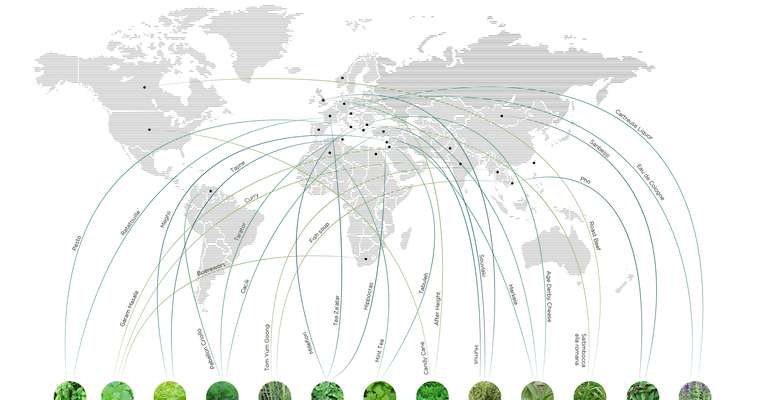
- New alliances
The pavilion is an irregular shaped volume built along the banks of the Danube channel, in Vienna. Covered by the yellow net, a sequence of plants stays on wood shelves and turns the pavilion into a sort of green chamber of wonder.
The plants have been carefully chosen among a wide range of worldwide aromatic and spice plants in order to send a clear message: although the diversity of cultural settings that coexist within each territory, it’s always possible to identify examples of peaceful cohabitation among different communities. The history of the herbs-tradition clearly shows that.
All the spice plants exhibited show through their possible usages how one culture is always the result of different cultures successfully criss-crossed and melted together. The pavilion is a metaphor of a small-scale green planet, a site to recognise our dependency on other species, and the capability of composing life out of movements and differences, in a shared responsibility.
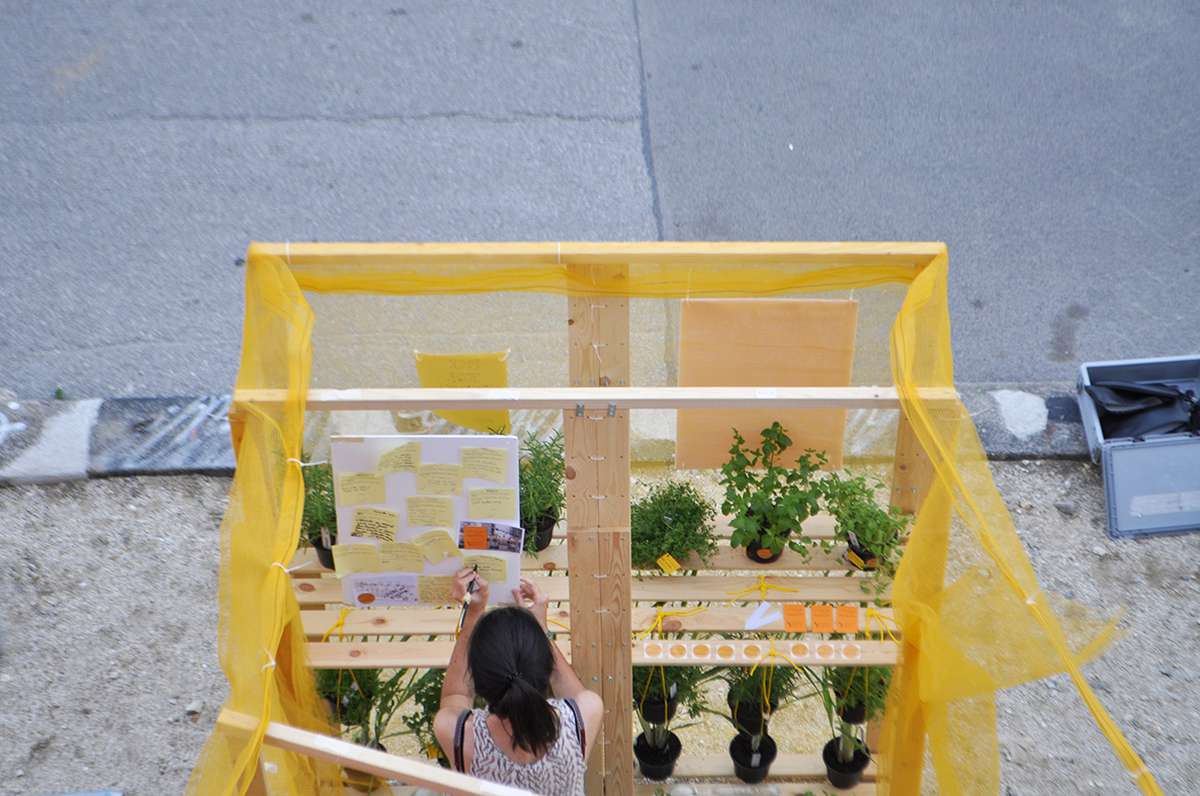
The pavilion attracts passers-by and provides them an unexpected cultural journey.

Senses and memories are fully touched: entering the “green chamber” means recognizing familiar smells and discovering cultural usages.
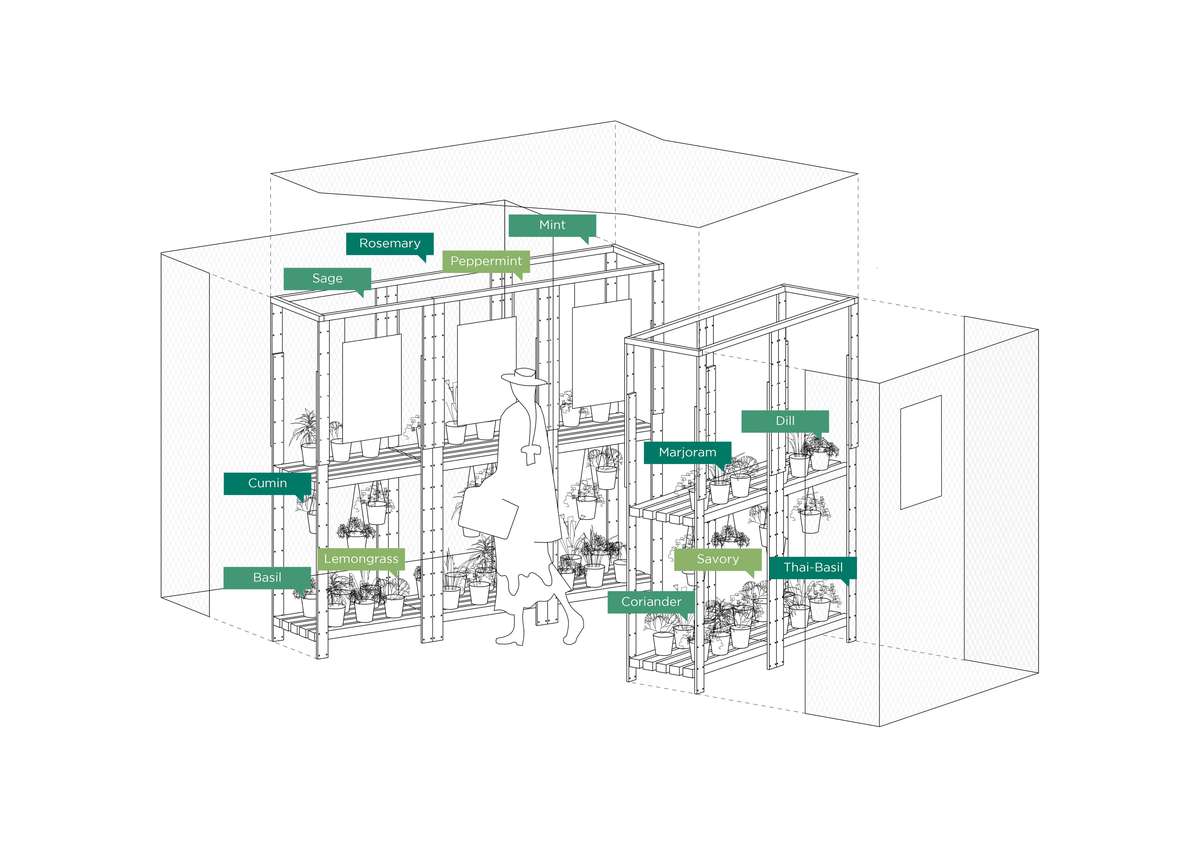
The pavilion exhibits 12 different aromatic plants, that have been carefully chosen according to the Viennese cultural setting.
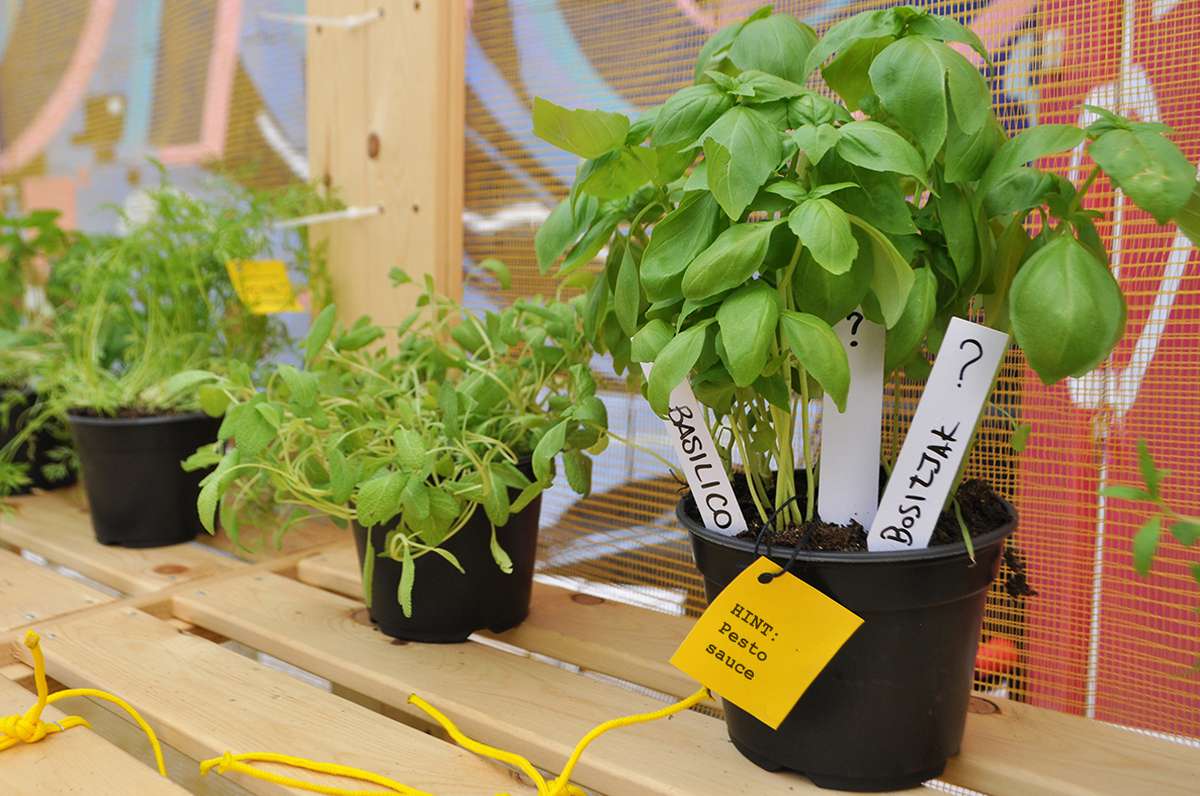
In each pot, the name of the plant has been substituted with its culinary usage in three different countries in the world, so that the visitors could playfully discover how diverse and unexpected the “mixité culturelle” of our countries is
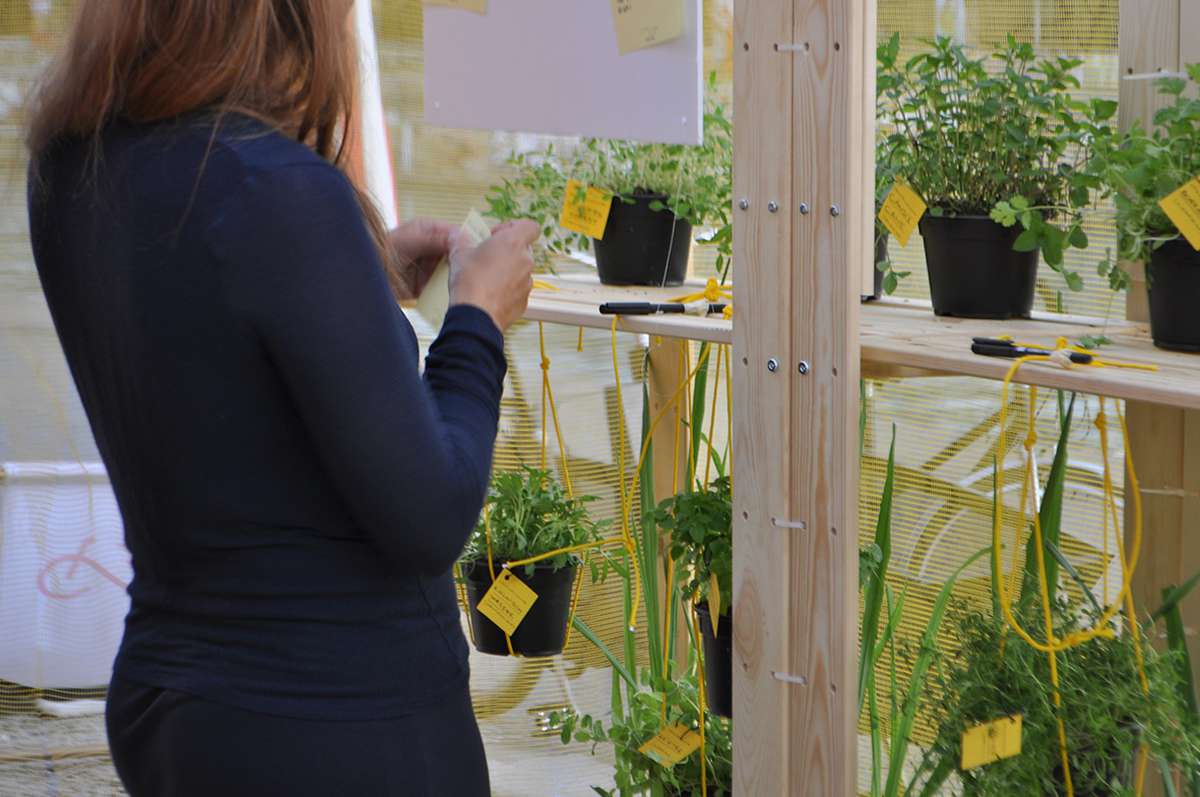
Visitors are asked to think about their experience related to the displayed herbs and to share their “green stories”, a personal usage or a culinary tip. The result is a lively portrait of the cultural identity of Vienna.
Cultivating Coexistance
Cultivating Coexistance

- New alliances
The pavilion is an irregular shaped volume built along the banks of the Danube channel, in Vienna. Covered by the yellow net, a sequence of plants stays on wood shelves and turns the pavilion into a sort of green chamber of wonder.
The plants have been carefully chosen among a wide range of worldwide aromatic and spice plants in order to send a clear message: although the diversity of cultural settings that coexist within each territory, it’s always possible to identify examples of peaceful cohabitation among different communities. The history of the herbs-tradition clearly shows that.
All the spice plants exhibited show through their possible usages how one culture is always the result of different cultures successfully criss-crossed and melted together. The pavilion is a metaphor of a small-scale green planet, a site to recognise our dependency on other species, and the capability of composing life out of movements and differences, in a shared responsibility.
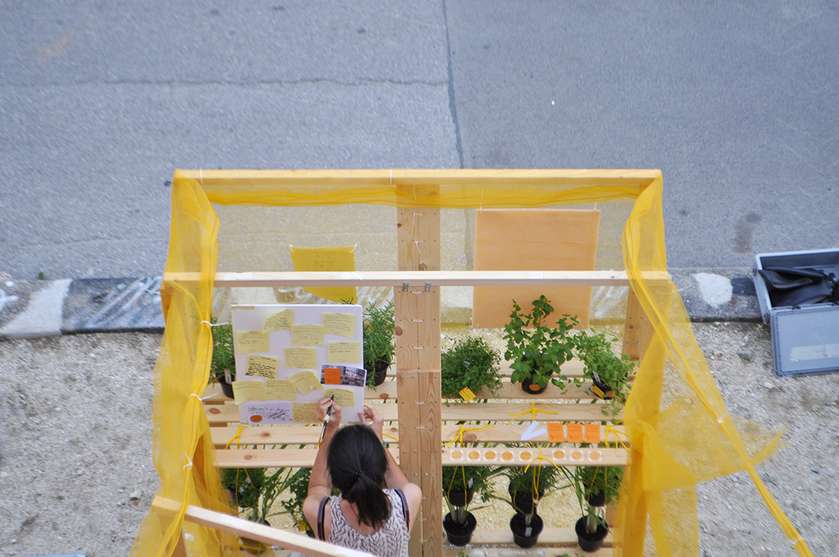
The pavilion attracts passers-by and provides them an unexpected cultural journey.
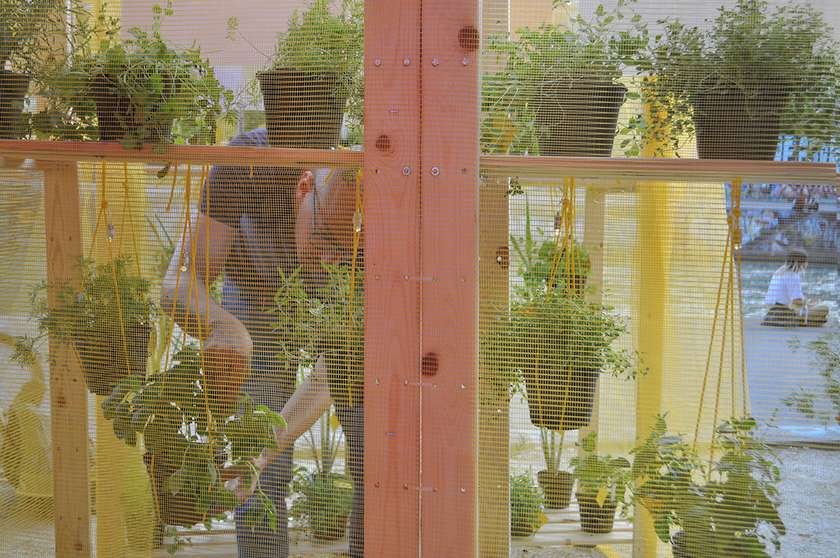
Senses and memories are fully touched: entering the “green chamber” means recognizing familiar smells and discovering cultural usages.
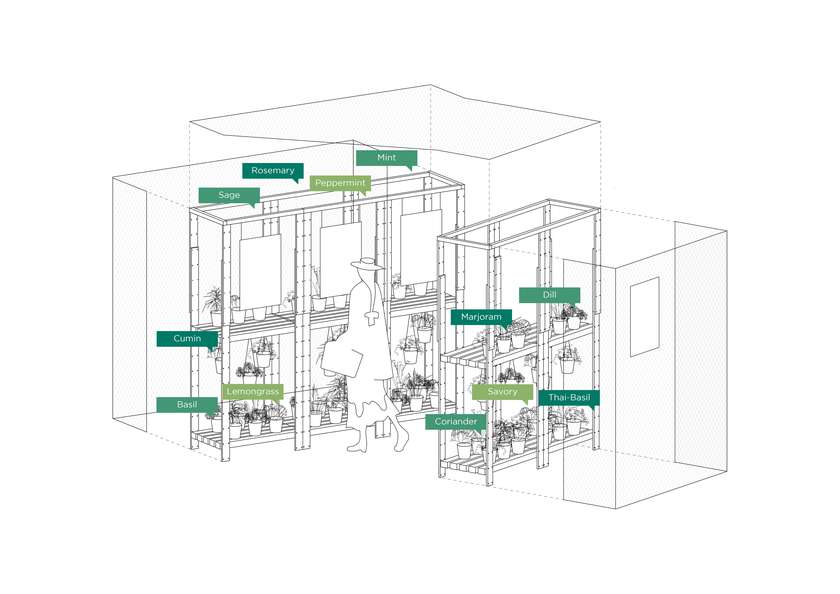
The pavilion exhibits 12 different aromatic plants, that have been carefully chosen according to the Viennese cultural setting.
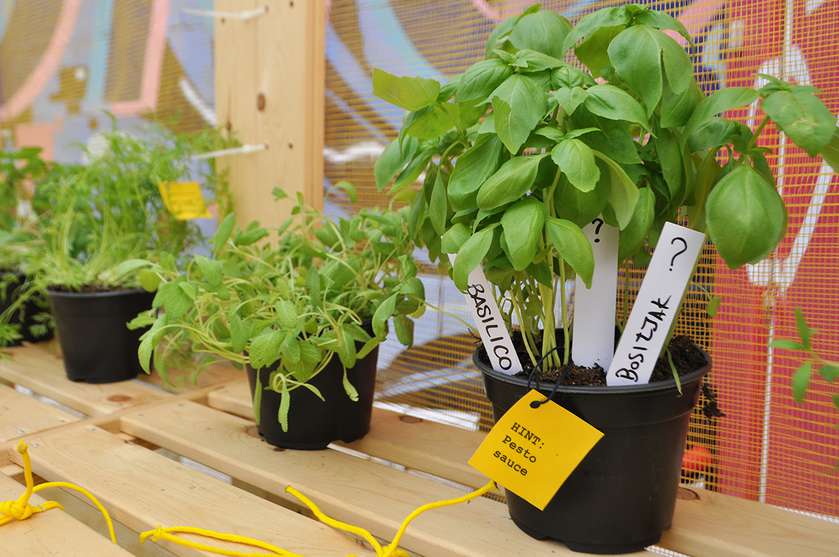
In each pot, the name of the plant has been substituted with its culinary usage in three different countries in the world, so that the visitors could playfully discover how diverse and unexpected the “mixité culturelle” of our countries is
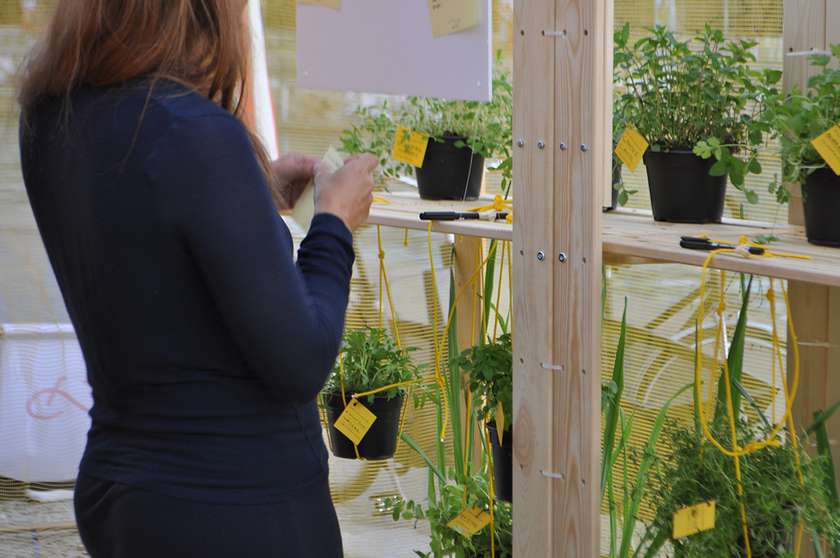
Visitors are asked to think about their experience related to the displayed herbs and to share their “green stories”, a personal usage or a culinary tip. The result is a lively portrait of the cultural identity of Vienna.